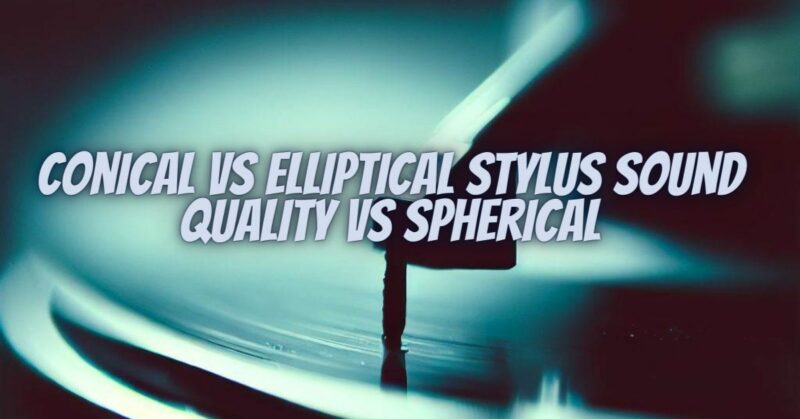The world of vinyl records is a realm of nostalgia, a place where analog enthusiasts revel in the warmth and depth of analog sound. While turntables and speakers play pivotal roles in the audio quality, the stylus, or needle, is equally important. Stylus shape, in particular, is a subject of much debate among audiophiles. This article delves into the “Stylus Shape Wars,” comparing conical, elliptical, and spherical stylus shapes to explore their impact on sound quality.
The Role of the Stylus
Before we dive into the specifics of stylus shapes, it’s crucial to understand the stylus’s role in the vinyl playback process. The stylus is the component responsible for tracking the grooves of a record, translating the physical grooves into electrical signals that your amplifier can then amplify and send to your speakers. The shape of the stylus tip directly affects how it tracks the grooves and, consequently, the sound quality produced.
- Conical Stylus
The conical stylus is one of the most traditional and widely used stylus shapes. It features a rounded, cone-shaped tip. Conical stylus tips tend to have a larger contact area with the record groove, making them more forgiving of minor imperfections and dust on the record’s surface. This design also means that conical styli apply less pressure to the groove, reducing record wear.
Pros:
- Durability: Conical styli tend to last longer due to their robust design.
- Forgiving: They can handle slightly damaged or dirty records better than other shapes.
- Reduced record wear: Lower contact pressure means less wear on your vinyl collection.
Cons:
- Reduced high-frequency detail: Conical styli may sacrifice some high-frequency detail and precision in tracking compared to elliptical and spherical counterparts.
- Elliptical Stylus
Elliptical stylus tips have an elongated, elliptical shape that allows them to track the record groove more precisely than conical styli. This results in improved high-frequency response and better tracking of complex passages. The narrower contact area, however, means that elliptical styli are less forgiving of dust and imperfections on the record surface.
Pros:
- High-frequency detail: Elliptical styli offer superior high-frequency detail and accuracy.
- Enhanced tracking: They excel in tracking complex passages, reducing distortion and wear on records.
Cons:
- Susceptible to damage: Elliptical styli are more prone to damage from dirt or mishandling.
- Record wear: Due to their narrower contact area, they can cause more wear on records if not properly maintained.
- Spherical Stylus
Spherical stylus tips have a rounded, ball-like shape that covers a large surface area when in contact with the record groove. They are the most forgiving of all stylus shapes when it comes to imperfect records and debris on the surface. However, they sacrifice some high-frequency detail and precision compared to elliptical styli.
Pros:
- Forgiving: Spherical styli are excellent at handling imperfect records and dust.
- Durability: They are less prone to damage due to their robust shape.
Cons:
- Limited high-frequency detail: Spherical styli may not reproduce the highest frequencies with the same accuracy as elliptical styli.
- Less precise tracking: They are not as precise in tracking complex passages as elliptical counterparts.
Choosing the Right Stylus
The choice of stylus shape ultimately depends on your priorities as a listener and the condition of your record collection. Here are some guidelines to consider:
- Conical: Ideal for those with a collection of well-worn or older records or for users who prioritize durability and longevity over absolute sound quality.
- Elliptical: Best for audiophiles seeking the highest fidelity and are willing to invest in well-maintained, clean records.
- Spherical: Suited for beginners, casual listeners, or individuals with a collection of records that may have seen better days.
The “Stylus Shape Wars” come down to a trade-off between durability, forgiveness, and high-frequency detail. While conical styli are more forgiving and durable, elliptical styli excel in high-frequency detail and tracking precision, and spherical styli are forgiving but less precise. The choice ultimately depends on your preferences, your record collection, and your commitment to maintaining your stylus and records. Whether you’re a seasoned audiophile or just starting your vinyl journey, selecting the right stylus shape is a crucial step in achieving the best possible sound quality from your vinyl records.


